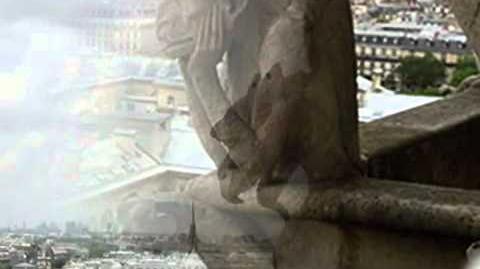
AdamdelaHalle.Damadamevient1
Adam de la Halle was a
French poet and composer. He lived and worked at Arras in northern France but studied in Paris. In the late 1270s he was in the service of Robert II, Count Charles of Artois. Adam's career and whereabouts after that date are uncertain, but in 1288 his nephew wrote of his departure from Arras and of his death. His affliations include The Confrérie des jongleurs et bourgeois d'Arras-a fraternity of minstrels founded in Arras around 1175. Recorded accounts of his correspondences to Paris indicate that he was musically trained in Paris.
In addition to motets, chansons, rondeauxs and plays, Adam de la Halle's contribution include poems and courtly lyrics. Music historians often describe la Halle as a composer of the past, being one of the few 13th-century composers who wrote both monophonic chansons and monophonic motets. His creativity in composition extends outside of sacred music. One such example is De ma dame vient, which is a combination of the courtly trouvere song with the newer form of the motet.
The Montpellier Codex
An important document for 13th century Franconian and pre-Franconian motet is the Montpellier Codex. This codex contains 336 polyphonic works composed between 1250 and 1300. It is divided in to 8 fasciles. The majority of the musical content of this codex is made up of love motets. This source is crucial for the study of the chronology of styleof French medieval polyphony as several methods of notation are used throughout the fasciles. De ma dame vient is found in this Codex.
De ma dame vient/Dieus, coument porroie/Omnes[]
Le Halle uses several sources for the construction of this piece. Written a 5th below its source, he tenor is borrowed from the melisma on "omnes" from the Gradual Viderunt omnes. The duplum begins on the refrain of his own monophonic rondeau Diex, coument porroie. The triplum quotes stanzas of poetry from other songs.
The notation for this trouvere is Franconian, where a precise indication for the rhythm of each note is recorded, an innovation from earlier motets. The tenor employs a modal rhythm while the upper voices use an underlying modal pattern. Smaller durations are used in the duplum and triplum in order for quicker motion than the tenor. Thus, a unique rhythmic character is given to each voice, and variety to the entire piece.These rhythmic differences within the parts are typical of Franconian motets.
In the case of De ma dame vient, these rhythmic differences adds to the meaning of the poem in the triplum-a man singing his pain at being separated from his lady; the duplum-the voice of a lady in search of a way to send word to tell him that he should come to her.
Sources[]
Burkholder, Peter J., Donald J. Grout. A History of Western Music. Eighth Edition. W.W. Norton Company, 2010.
Falck, Robert. “Adam de la Halle.” Grove Music Online. Oxford Music Online. Oxford
University Press. http://www.oxfordmusiconline.com:80/subscriber/article/grove/music/
00163 Grout, Donald Jay, Peter J. Burkholder, and Claude V. Palisca. A History of Western Music. New York: W.W. Norton & Company, 2010.
